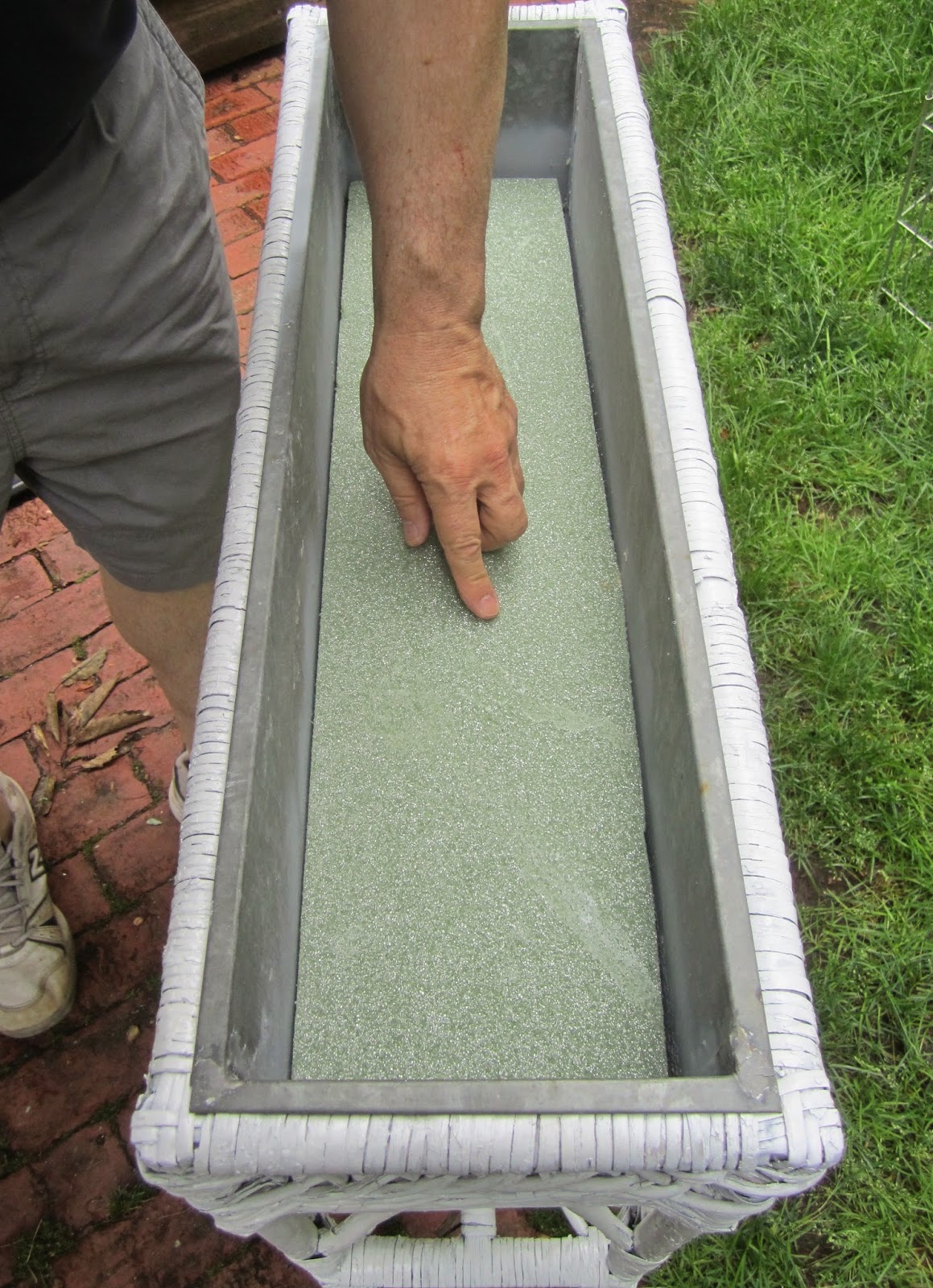Silk Flowers are a wonderful alternative to live plants, especially when you are decorating a porch. They do not drop leaves or petals or need to be watered. I pulled out of a friend's basement an antique wicker planter that needed paint and a bit of glue. Luckily the zinc insert was there.
After sprucing up the planter, I turned to my long time friend, Rick Caran, a silk floral designer.
He is currently known internationally as an expert in animal training, and tours with his original dog, Jilli, and new puppies, doing paid and benefit shows.
This photo shows the zinc liner, which I rubbed with steel wool, and lightly spray painted. The wicker basket planter was wire brushed gently and loose ends were glued with waterproof glue, then spray painted three times.
Rick measures the flower foam to fit the opening of the planter.
Here Rick is scoring the flower foam in order to
snap it in half with his knee.
The original piece was too low in the planter, so he contributed another piece of foam to raise up the base.
Just the right height.
Next he used Sure Stick, which came off this spool like a sring of chewing gum.
He pushed a bit into the edges to anchor the foam to the zinc liner.
When the foam was secure, Rick placed real Spanish Moss, which he gathered on one of his trips south, over the foam.
He tucked it in to cover the foam.
After sharpening the end of each flower stem with a pocket knife, Rick used his special machine to clamp on a metal tip.
These tips hold each flower stem in the foam, and do not allow the flowers to loosen later on.
He wrapped each tip with green floral tape.
I brought some silk ivy which he arranged in the planter. We wanted the patterns on the wicker planter to show through the ivy.
Each silk stem was pushed down into the foam and secured. He draped the ivy on both sides so that the planter could be viewed from either direction.
I decided to use silk Hydrangeas, which would have a traditional "antique porch look." We kept the color pallet to just whites and light blues with smaller light green Hydrangeas to imitate nature.
At first Rick thought the flowers were too large, but they needed to be a good size to be seen by passing boats from the water side. He arranged the blooms at different heights in an asymmetrical naturalistic way.
The planter finished in his garden, but how would it look on the porch?
The colors were perfect with the awning and old wicker chairs.
On the porch.
My friend ordered silk hanging baskets full of Geraniums.
The look was complete, no falling leaves or petals, and after covering them and storing them elsewhere for the winter, good for future years. Thanks Rick!






































